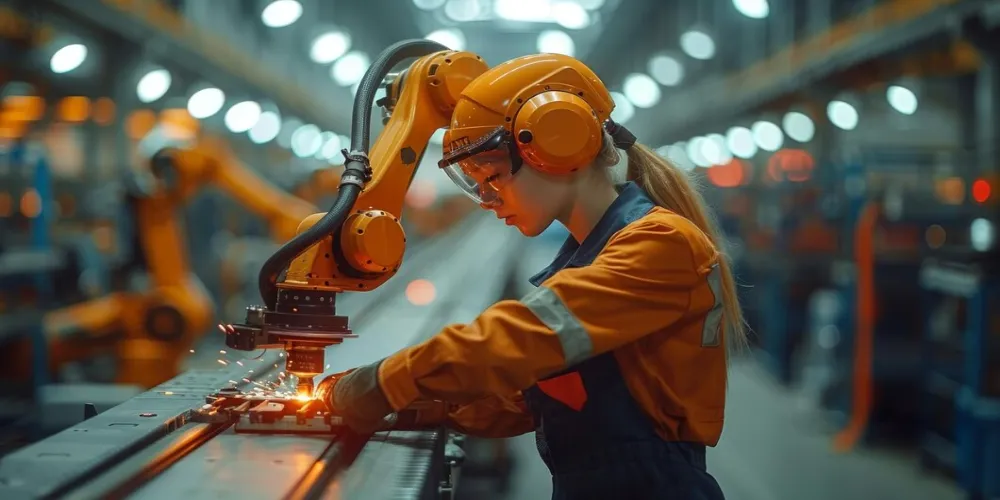New Product Introduction
New Product Introduction (NPI) is the process of taking a product from the initial concept stage through to mass production and commercialization ...
By AMREP | Posted on July 18, 2024
Return Merchandise Authorization, or RMA for short, plays a pivotal role in both manufacturing and retail worlds. It connects two critical concepts: customer satisfaction and product quality control. Imagine this: a customer buys a product, but, alas, it doesn't meet their expectations or, worse, it's defective. This is where RMA comes in to save the day. It's the process that lets customers easily return those products back to the folks who made or sold them, whether for a refund, a brand-new replacement, a fix-up, or even store credit.
So, why is RMA such a big deal? Well, it's all about keeping customers happy and ensuring the products on the shelves are top-grade. An effective RMA process is a sign of superb customer service and smart product management. It's the industry's way of saying, "We've got your back," ensuring any product setback is handled swiftly and smoothly.
In this article, we're going to dive deep into the world of RMA. We'll unpack what it really entails, why it's so crucial in the grand scheme of things, and how businesses can play their RMA game. It's not just about taking back a faulty product; it's about building trust, ensuring quality, and fostering a relationship with customers that lasts.
The RMA process starts when a customer identifies a problem with a product and contacts the manufacturer or seller to initiate a return. The customer is then provided with an RMA number, which serves as an authorization and tracking mechanism for the return. This number is crucial for organizing returns, as it helps in monitoring the returned item throughout the repair, replacement, or refund process.
Once an RMA number is issued, the customer can ship the product back to the manufacturer or seller. Upon receipt, the product is inspected to verify the defect or problem, after which the appropriate action is taken based on the company's return policy. This could involve repairing the product, replacing it with a new or refurbished unit, issuing a refund to the customer, or giving a credit for future purchases.

RMA stands as a critical pillar in:
Quality Control and Improvement: The RMA process provides manufacturers with direct feedback on product defects and issues. This information is invaluable for identifying trends in product failures, leading to improvements in product design, manufacturing processes, and quality control measures.
Must-see: How to Improve Quality in Manufacturing? Key Strategies
Customer Satisfaction and Loyalty: Efficiently handling returns and addressing customer issues through an RMA system can significantly enhance customer satisfaction. This, in turn, fosters customer loyalty, as buyers are more likely to return to a brand that stands behind its products and resolves issues promptly.
Inventory Management: The RMA process helps in managing inventory by tracking returned products. This ensures that defective products are not resold and that the inventory system properly accounts for refurbished or replaced items.
Legal and Compliance: For some products and industries, handling returns and warranties is not just a matter of customer service but also compliance with legal requirements. An RMA system helps ensure that returns are processed in accordance with relevant laws and regulations.
The Return Merchandise Authorization (RMA) process is a procedure through which customers return defective or unwanted products to the manufacturer or supplier for repair, replacement, or refund. This process is common in the electronics, computer hardware, and other consumer goods industries. Here's a general overview of how the RMA process works:
The specific details of the RMA process can vary widely between companies and products, including the length of time the process takes, who pays for shipping, and the conditions under which returns are accepted. Customers need to review the return policy of the company from which they purchased the product to understand the specifics of the RMA process and ensure compliance with all requirements.
Read More: What Is Continuous Improvement With Lean Systems?
Implementing an effective RMA system is essential for any manufacturing or retail operation aiming to uphold high standards of customer service and product quality. By adhering to the following best practices, companies can create a seamless, efficient return process that not only addresses customer needs but also provides valuable insights for ongoing product improvement.
Clear Return Policy: Establish a clear and concise return policy that outlines the conditions under which products can be returned, the process for initiating an RMA, and what the customer can expect during the process.
Streamline the RMA Process: Make it easy for customers to request an RMA, such as through an online form or customer service hotline. The simpler the process, the more satisfied the customer is likely to be.
Track and Analyze Returns: Use the data from RMAs to track the reasons for returns and analyze patterns. This can help identify product issues early and guide improvements.
Communicate Promptly and Clearly: Keep the customer informed throughout the RMA process, including when the returned item is received, the outcome of the inspection, and when a refund, replacement, or repair is processed.
Leverage Technology: Implement RMA software to automate and manage the RMA process more efficiently. This can help in tracking returns, managing inventory, and analyzing data for quality control.
The Return Merchandise Authorization (RMA) process is a vital aspect of customer service and quality management in manufacturing. By effectively managing returns, repairs, and replacements, manufacturers can not only improve their product quality and customer satisfaction but also gain insights into product performance and areas for improvement. Implementing an effective RMA system, therefore, is not just about handling returns but about building a brand that customers trust and rely on.
AMREP’s involvement in returns management, guided by our quality management system, is critical at the sorting, repair, and refurbishment stages. At the refurbishment facility, our system ensures we re-inspect refurbished products to confirm their quality before they are resold. We also sort through product returns, identifying which items are defective and can be refurbished, all through the structured processes of our quality management system.
Enhancing Quality Management: The Return Material Authorization Process and Data Collection for Warranty Decisions.
https://www.linkedin.com/pulse/enhancing-quality-management-return-material-process-laurenA new grey prediction model for the return material authorization process in the TFT-LCD industry.
https://link.springer.com/article/10.1007/s00170-018-1754-yContact Us To See What We Can Do
Call Us
Mon - Sat 9.00 - 18.00
Sunday Closed


14 - February 2024
14
February
2024
New Product Introduction (NPI) is the process of taking a product from the initial concept stage through to mass production and commercialization ...

06 - October 2023
06
October
2023
A manufacturing process audit is a systematic and in-depth examination of manufacturing processes to assess production performance and identify potential or ...

21 - February 2024
21
February
2024
Lean manufacturing is a key method used to streamline production. Its overall objective is to maximise value and customer...
